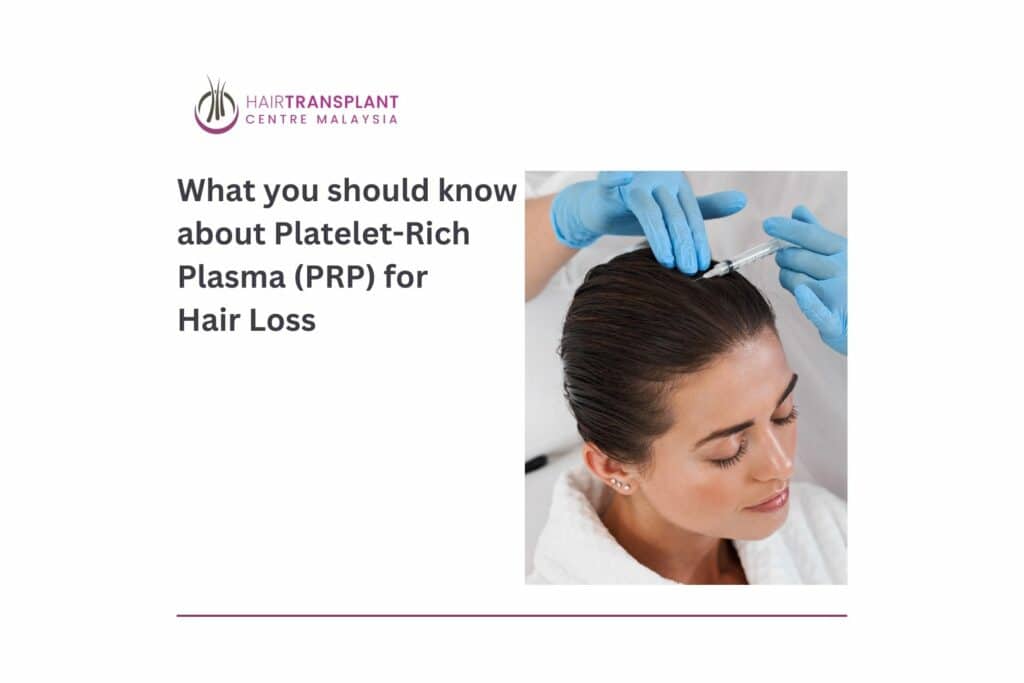What you should know about Platelet-Rich Plasma (PRP) for Hair Loss
Are you seeking for a way to stop hair loss? Hair loss can be helped by a treatment that stimulates healing in damaged joints.
Male- or female-pattern baldness affects about 50 million males and 30 million women in the United States. It can start at any age, but it becomes considerably more frequent beyond the age of 50, when more than half of all men have some form of hair loss.
However, a new treatment called platelet-rich plasma (PRP) therapy appears to help restore hair that has been lost. According to hair restoration experts, PRP has almost no adverse effects other than a faint sense of pressure at the injection site.
Let us call you

What is PRP treatment and how does it work?
PRP treatment was first used by doctors approximately a decade ago to help injured or surgically repaired joints recover faster.
A technician collects your blood and spins it in a centrifuge to separate the platelets and plasma throughout the therapy. The plasma is then injected, which aids in the repair of blood vessels, the promotion of cell development and wound healing, and the stimulation of collagen creation.
Researchers discovered that high concentrations of platelets in plasma cells assist boost hair development by lengthening the developing phase of the hair cycle, which led to the use of PRP in dermatology.
Doctors inject plasma into the scalp to help with hair loss. Injections are usually given monthly for three months, then stretched out across three or four months for up to two years. Your injection schedule will be determined by your genetics, hair loss pattern and severity, age, and hormones.
What are the advantages and disadvantages of PRP therapy against other treatments?
Finasteride and minoxidil are two FDA-approved medicines for treating hair loss. However, you must take these treatments regularly over time, and the consequences are unpredictable, according to her.
Each medicine has its own set of adverse effects:
- Minoxidil can induce scalp dryness and irritation.
- Finasteride has been linked to male sexual dysfunction.
Hair transplantation is another possibility, although it necessitates scalp incisions and takes longer to recover from, according to her.
Hair transplantation is normally only recommended for patients who have severe hair loss because it is a surgical treatment. A transplant is also more expensive and results in scarring. Doctors can use PRP therapy before transplantation to have better results with more dense hair growth.
Researchers believe the findings are encouraging.
PRP therapy’s promise has just been validated by new studies. Researchers in India looked at males with male-pattern baldness who took both authorised drugs but noticed no difference in their hair growth in a 2014 study.
They experienced around 30% greater growth in thinning regions after four PRP treatments.
Male patients using PRP treatment had more hair and density, according to a 2017 Italian research.
It takes around three months to observe a difference. Most of her male and female patients have regrown 30 percent to 40% of their hair after that period.
What qualifies you as a PRP treatment candidate?
A big part of PRP’s effectiveness is finding the correct patients to treat. For many people, PRP is safe and effective. If you fall under one of the following categories, you should avoid PRP therapy:
- If you have an underlying issue like thyroid disease or lupus, you’re not going to get excellent outcomes because these disorders will induce hair loss over time.
- Your platelets will not perform as well if you are using blood thinners, and the operation will be less successful.
If your hair loss is recent, PRP treatment will help you. Schedule an appointment with your hair expert and find out more about PRP and how it can help you regrow your hair.


